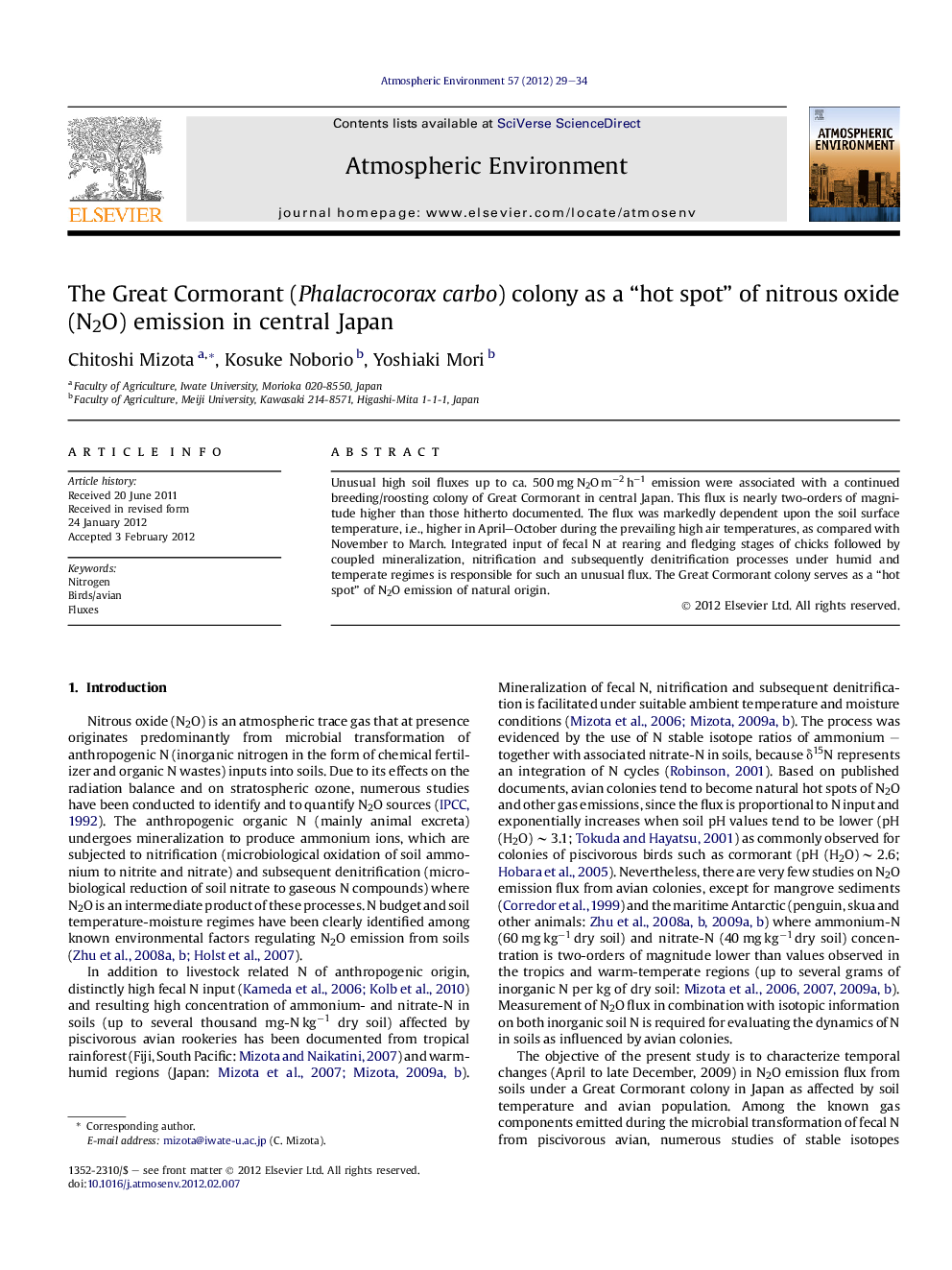| Article ID | Journal | Published Year | Pages | File Type |
|---|---|---|---|---|
| 4438874 | Atmospheric Environment | 2012 | 6 Pages |
Unusual high soil fluxes up to ca. 500 mg N2O m−2 h−1 emission were associated with a continued breeding/roosting colony of Great Cormorant in central Japan. This flux is nearly two-orders of magnitude higher than those hitherto documented. The flux was markedly dependent upon the soil surface temperature, i.e., higher in April–October during the prevailing high air temperatures, as compared with November to March. Integrated input of fecal N at rearing and fledging stages of chicks followed by coupled mineralization, nitrification and subsequently denitrification processes under humid and temperate regimes is responsible for such an unusual flux. The Great Cormorant colony serves as a “hot spot” of N2O emission of natural origin.
► High soil fluxes of N2O emission were observed in central Japan. ► The flux was markedly dependent upon the soil surface temperature. ► The Great Cormorant colony serves as a “hot spot” of N2O emission.
